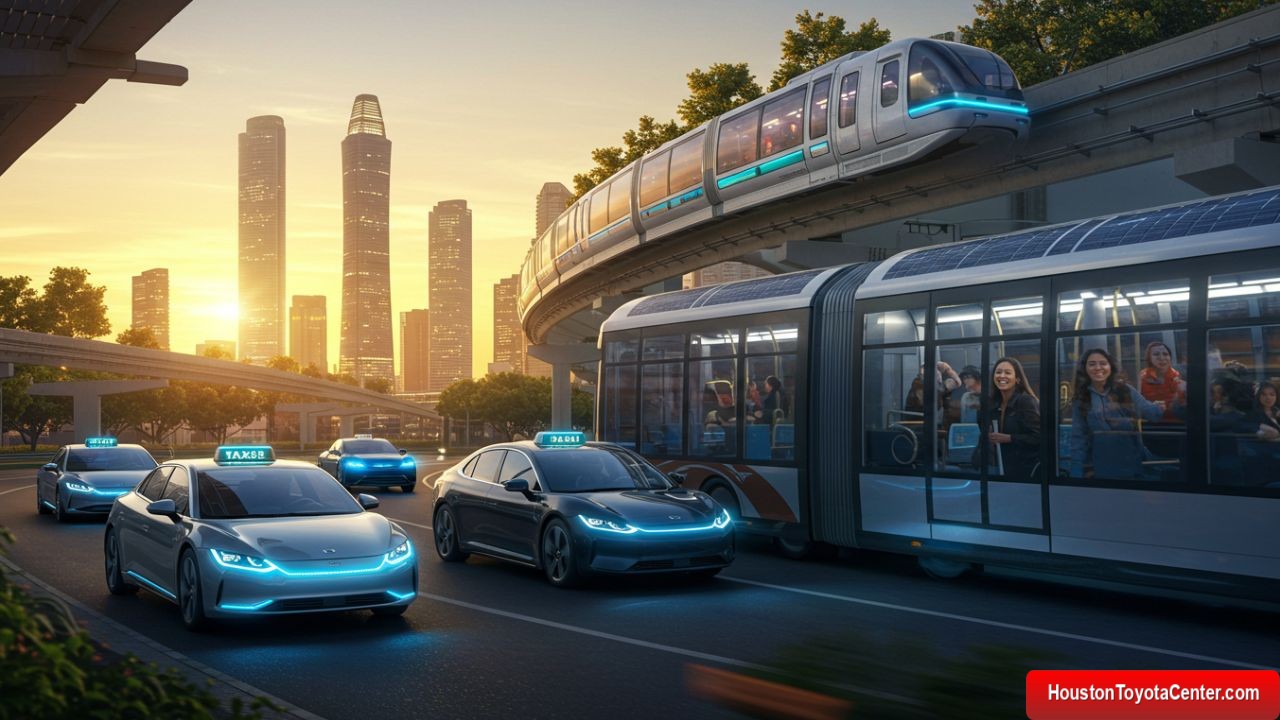Urbanization is accelerating globally, with over 68% of the world’s population expected to live in cities by 2050. This shift strains existing transportation systems, leading to congestion, pollution, and inefficiencies. Traditional vehicles, reliant on fossil fuels, exacerbate climate change and degrade air quality. Enter BYD (Build Your Dreams) , a Chinese automotive and battery giant, which has positioned itself as a leader in smart city mobility solutions. By integrating electric vehicles (EVs), autonomous driving, and intelligent transportation networks, BYD is redefining how cities move.
BYD’s Vision for Smart Cities
BYD’s approach to urban mobility is holistic, combining:
- Electrification : Transitioning from ICE (Internal Combustion Engine) vehicles to EVs.
- Automation : Leveraging AI and sensors for safer, efficient transportation.
- Connectivity : IoT-enabled systems for real-time traffic management.
- Sustainability : Closed-loop energy systems and renewable integration.
Core Technologies Powering BYD’s Solutions
1. Electric Vehicles (EVs): The Foundation
BYD’s EV lineup addresses diverse urban needs:
| Model | Key Features | Target Use Case |
|---|---|---|
| BYD Han EV | 700+ km range, Blade Battery, 3.9s 0-100 km/h | Premium sedan for commuters |
| BYD Tang EV | 7-seater SUV, 505 km range, DiPilot ADAS | Families, ride-sharing |
| BYD Dolphin | Compact, 400 km range, affordable | Urban deliveries, young users |
| BYD Buses | 250+ km range, wheelchair access, solar panels | Public transit |
Blade Battery Technology :
BYD’s proprietary lithium iron phosphate (LFP) batteries offer:
FREE: Quickly identify and understand problems with your vehicle 🚘
CLICK HERE- Safety : Resists thermal runaway.
- Longevity : 1.2 million km lifespan.
- Sustainability : 100% recyclable.
2. Autonomous Driving: DiPilot System
BYD’s DiPilot platform combines:
- Hardware : 12 ultrasonic sensors, 8 cameras, LiDAR.
- Software : Machine learning for adaptive cruise control, lane-keeping, and self-parking.
- Levels of Autonomy :
- Level 3 : Hands-off highway driving (available in Han EV).
- Level 4 : Planned for 2025 in restricted zones (e.g., airports).
3. Integrated Mobility Ecosystem
BYD’s “7+4” strategy targets 7 vehicle categories (private cars, buses, taxis, etc.) and 4 environments (urban, suburban, ports, airports). Key projects include:
- SkyRail : Automated monorail systems for congested cities (e.g., Salvador, Brazil).
- E-Transport Hubs : Solar-powered charging stations with battery-swapping tech.
Sustainability: Beyond Zero Emissions
BYD’s sustainability goals extend to:
- Carbon Neutrality : 100% renewable energy in production by 2030.
- Circular Economy : EV battery recycling plants in China and Europe.
- Smart Grids : Vehicle-to-grid (V2G) tech to stabilize energy networks.
Case Studies: BYD in Action
1. Shenzhen, China: The World’s First All-Electric Bus Fleet
- Deployment : 16,000 BYD e-buses and 22,000 e-taxis.
- Impact :
- Reduced CO₂ emissions by 1.35 million tons annually.
- Noise pollution dropped by 50%.
2. Los Angeles, USA: Autonomous Delivery Pods
- Partnership : BYD + Amazon Logistics.
- Use Case : Last-mile delivery via autonomous Dolphin EVs.
- Efficiency Gain : 30% faster deliveries during peak hours.
Challenges and Criticisms
- Infrastructure Costs : High upfront investment for SkyRail and charging networks.
- Regulatory Hurdles : Varied global standards for autonomous vehicles.
- Battery Dependency : Supply chain risks for rare materials like lithium.
The Future: BYD’s Roadmap
BYD plans to:
- Launch Level 4 autonomous taxis in Dubai by 2026.
- Expand vertical takeoff and landing (VTOL) vehicles for urban air mobility.
- Partner with governments to create 15-minute cities (all services within a 15-minute walk/ride).
Conclusion
BYD’s smart city vehicles are more than EVs—they’re nodes in a connected, sustainable urban ecosystem. By addressing pain points like pollution, congestion, and inefficiency, BYD is setting a blueprint for future-ready cities.


Leave a Reply